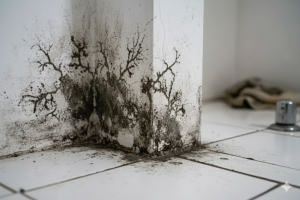Last Updated on April 21, 2025 by teamobn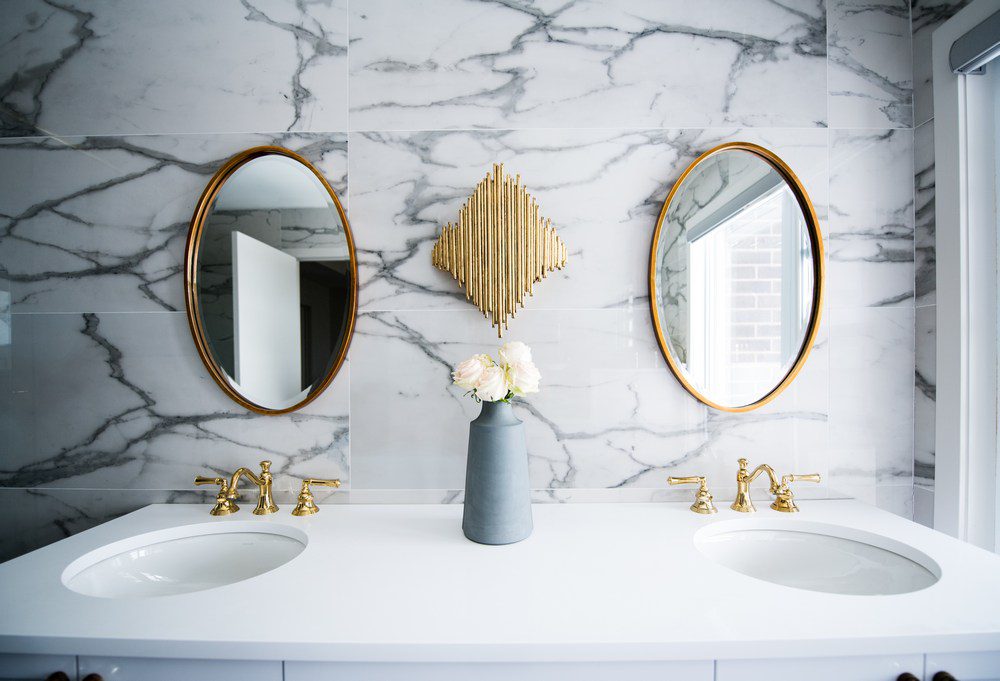
When choosing a bathroom sink, it’s crucial to consider both functionality and style. This guide offers valuable tips and tricks to help you select the perfect bathroom sink. We’ll cover different types, materials, and designs. We aim to make your decision-making process simpler and more informed.
Contents
Understanding Different Types of Bathroom Sinks
When it comes to bathroom renovations or building a new home, one of the key elements you’ll choose is the bathroom sink. It’s a functional piece and a significant part of your bathroom’s aesthetics. This section will explore the available bathroom sinks, helping you understand their features, benefits, and best uses.
Pedestal Sinks
A classic and elegant choice, pedestal sinks are ideal for smaller bathrooms or powder rooms where space is limited. They stand on a single pedestal, offering a timeless look. These sinks don’t provide storage space, making them less suitable for main bathrooms but perfect for areas where space and simplicity are paramount.
Undermount Sinks
Undermount sinks offer a seamless look as they are mounted under the countertop. This type looks sleek and modern, making cleaning easier, as there is no rim on the counter to catch debris. They’re ideal for bathrooms with solid countertop materials like granite or marble. However, they require professional installation and are usually more expensive.
Vessel Sinks
Vessel sinks sit on the counter, resembling a bowl or vessel. This type adds a touch of luxury and uniqueness to your bathroom. They come in various materials, shapes, and colors, making them versatile for any bathroom style. However, they might not be the best choice for families with small children due to their height and accessibility.
Wall-Mounted Sinks
Wall-mounted sinks are attached directly to the wall, making them great space savers. They offer a minimalist, clean look and are ideal for small bathrooms. The absence of a vanity means easy floor cleaning and more visible floor space, giving the illusion of a bigger room. However, plumbing is usually exposed, which might not appeal to everyone.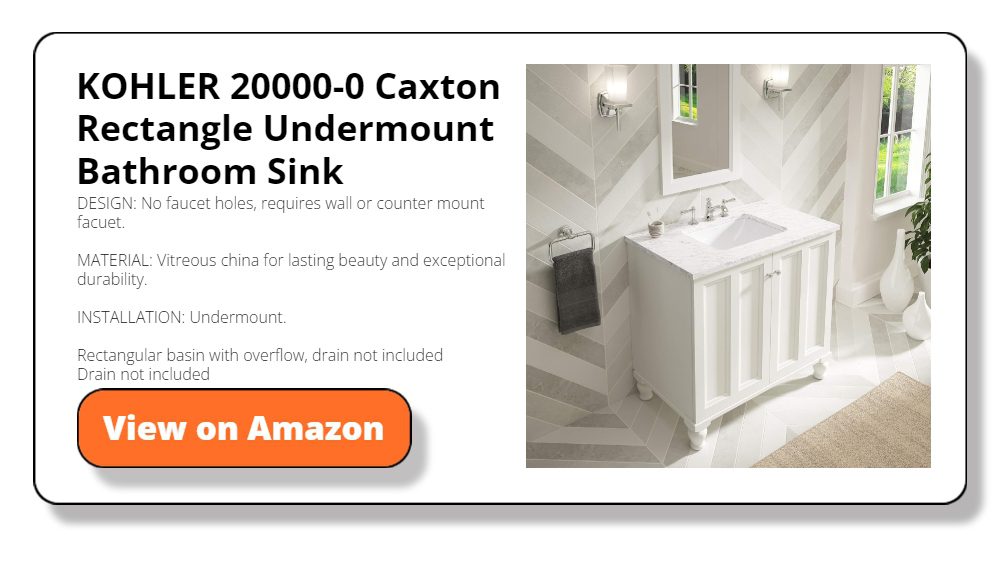
Console Sinks
A hybrid between a wall-mounted sink and a pedestal sink, console sinks are mounted on the wall and supported by two or four legs. They often have some countertop space and sometimes come with built-in towel rails. These sinks blend the elegance of pedestal sinks with the practicality of a more traditional vanity.
Drop-In Sinks
Also known as self-rimming sinks, drop-in sinks are designed to fit into a hole in your countertop, with their rim resting on the surface. They are easy to install and work with various countertop materials and styles. However, the rim can collect grime and water, requiring regular cleaning.
Corner Sinks
Corner sinks can be a great option if you’re tight on space. As the name suggests, they are designed to fit into a corner, maximizing every inch of your bathroom. These are particularly useful in small guest bathrooms or powder rooms.
Integral Sinks
Integral sinks combine the countertop and sink into one seamless piece, usually made from the same material like solid surface, quartz, or stone. This design offers a sleek, clean look with easy maintenance, as there are no seams or gaps where dirt can accumulate.
Choosing the Right Sink
When selecting the right bathroom sink, consider your bathroom size, style preferences, and practical requirements. Under-mount or vessel sinks can add a luxurious feel to larger bathrooms, while pedestal or wall-mounted sinks are ideal for smaller spaces. Material and maintenance are also important factors.
Durable materials like porcelain and ceramic are easy to clean and maintain, whereas glass or stone might require more care.
The choice of your bathroom sink can significantly impact the functionality and aesthetic of your space. By understanding the different types available, you can make an informed decision that complements your bathroom’s design and meets your practical needs.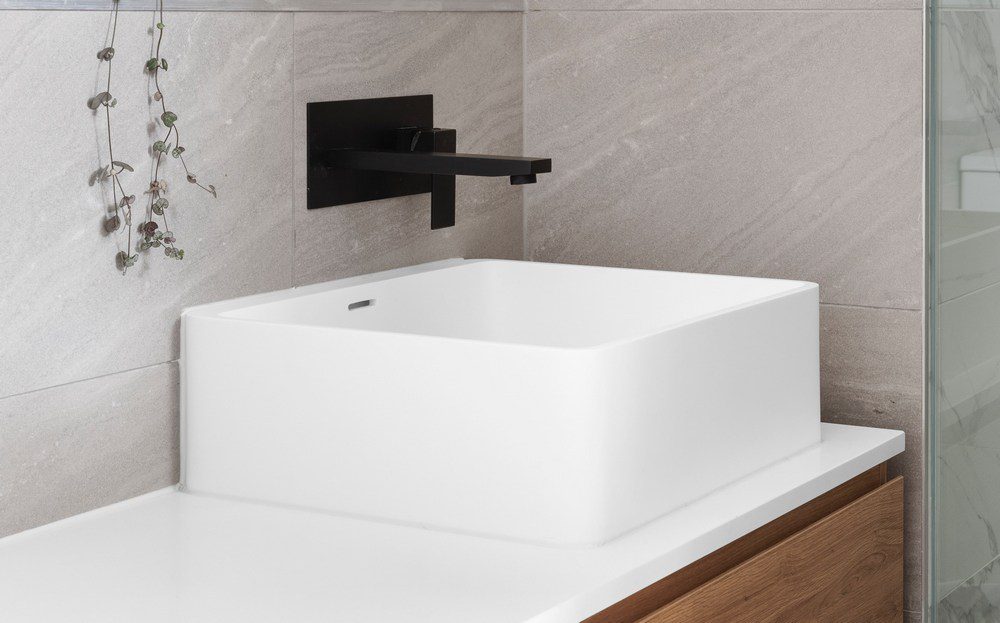
Material Matters
Choosing the right material for your bathroom sink is as important as selecting the type. The material not only defines the sink’s durability and maintenance requirements but also significantly contributes to the overall style of your bathroom. Here, we will explore the most common materials used for bathroom sinks, highlighting their benefits and considerations.
Ceramic
Ceramic sinks are popular due to their durability and wide range of styles. They are resistant to stains and scratches, making them a practical choice for busy bathrooms. Ceramic sinks also come in various shapes and colors, offering flexibility in design. However, they can be heavy, requiring sturdy support.
Porcelain
Porcelain, a subset of ceramic, is known for its glossy finish and resistance to fading and discoloration. It’s a classic choice that fits traditional and modern bathroom designs well. Porcelain is easy to clean but can be prone to chipping if struck with a hard object.
Glass
Glass sinks add a contemporary and elegant touch to any bathroom. They are available in various colors and textures, from clear and smooth to frosted and patterned. Glass sinks require careful maintenance to avoid scratches and to keep them looking pristine. They are best suited for bathrooms that are not heavily used.
Stone
Stone sinks from granite, marble, or soapstone bring a natural and luxurious element to your bathroom. Each stone sink is unique, with distinct patterns and colors. They are durable and long-lasting but require regular sealing to prevent staining and maintain their beauty.
Metal
Metal sinks, including stainless steel, copper, and brass, offer a modern and industrial look. Stainless steel is durable, easy to clean, and resistant to heat and stains. Copper has natural antibacterial properties and develops a unique patina over time. Brass sinks add a vintage charm but may require more maintenance to prevent tarnishing.
Solid Surface
Solid surface materials, like Corian or cultured marble, offer seamless integration with countertops. They are durable, non-porous, and available in various colors and finishes. Scratches and burns can be sanded out, making them a long-lasting option. However, they can be expensive compared to other materials.
Composite
Composite sinks, made from acrylic and quartz, are gaining popularity. They are tough, resistant to scratches, and available in a variety of colors. Composites can mimic the look of natural stone at a more affordable price and with less maintenance.
Resin
Resin sinks are lightweight and can be crafted into various shapes and designs. They offer a contemporary look and are available in a variety of colors. Resin is durable and easy to clean but may not withstand high temperatures or other materials.
Choosing the Right Material
Your choice of material should align with your bathroom’s style, usage, and maintenance preferences. Durable and easy-to-clean materials like porcelain or ceramic are advisable for high-traffic family bathrooms. For a more luxurious and unique look, stone or glass can be great options.
Consider the bathroom’s overall aesthetic, maintenance requirements, and budget when selecting the material for your sink. Each material has unique advantages and can contribute significantly to the functionality and style of your bathroom.
Design and Style Considerations
The design and style of your bathroom sink play a pivotal role in defining the overall ambiance of your bathroom. The choices are vast, from sleek, modern designs to more classic and traditional styles. This section delves into various design and style considerations aspects, helping you choose a sink that meets your practical needs and complements your bathroom’s aesthetic.
Matching the Sink with Your Bathroom Decor
The sink should harmonize with the overall theme of your bathroom. For a modern, minimalist bathroom, consider sleek lines and simple shapes. Vessel or undermount sinks are often preferred in contemporary settings. Traditional bathrooms may benefit from classic styles like pedestal, or console sinks with more ornate designs.
Contemporary vs. Traditional Designs
Contemporary designs often feature clean lines, minimalistic forms, and innovative materials like resin or glass. Traditional designs, on the other hand, embrace more intricate details, curves, and classic materials like porcelain and ceramic. Your choice should align with your home’s architecture and interior design style.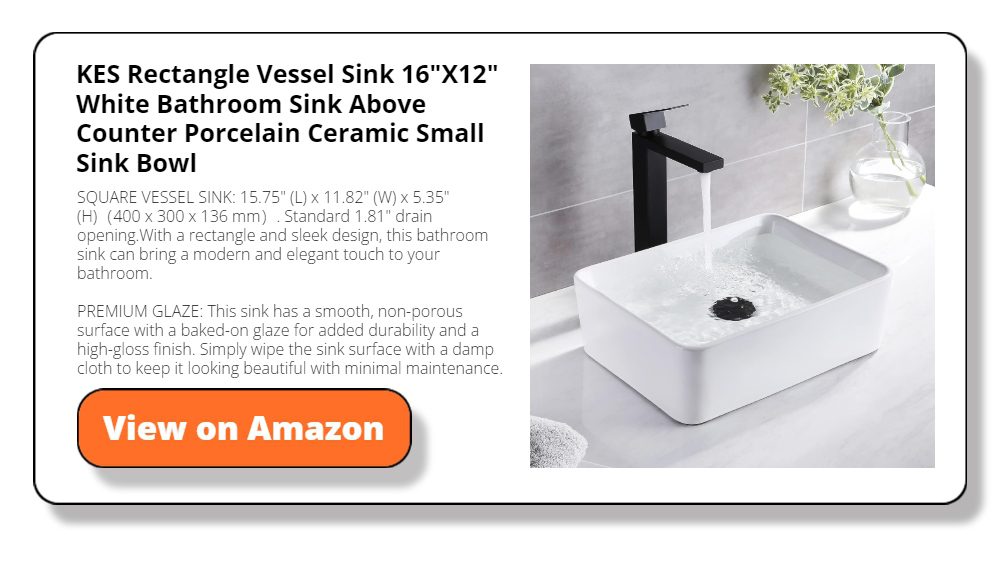
Size and Shape
The size of your bathroom sink should be proportional to the size of your bathroom and vanity. Larger bathrooms accommodate wider or double sinks, while compact bathrooms may require smaller or corner sinks. The shape of the sink also contributes to style—oval and round sinks tend to look more traditional, whereas rectangular or square sinks have a modern appeal.
Color and Finish
Color and finish can dramatically impact the look of your bathroom sink. White is a timeless choice that offers a clean and bright look, suitable for various styles. However, don’t shy away from bold colors or unique finishes, especially if you’re aiming for a statement piece. Matte finishes are trending and can add a contemporary touch.
Faucet Compatibility
Your sink design should be compatible with your faucet choice. Some sinks come with pre-drilled holes for faucets, while others, like most vessel sinks, require wall-mounted or tall basin mixers. Ensure the faucet’s style, color, and finish complement the sink.
Integrated Features
Some modern sinks have integrated features like built-in soap dispensers, towel holders, or lighting. These features can enhance functionality and contribute to a cohesive and sophisticated bathroom design.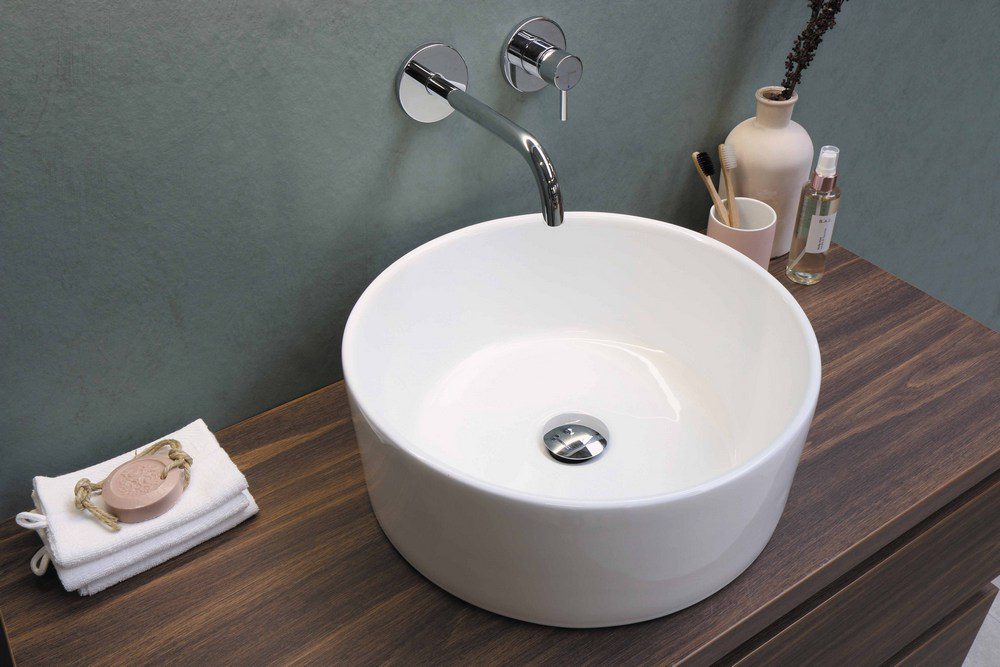
Customization Options
If you’re looking for something unique, custom-designed sinks are an option. These can be tailored to fit specific dimensions, colors, and materials, offering a personalized touch to your bathroom.
Durability and Maintenance
While style is important, consider the durability and maintenance of the sink. Materials like porcelain and ceramic are durable and easy to clean, making them practical for everyday use. Glass and stone might require more careful maintenance but offer a luxurious look.
Balancing Aesthetics with Functionality
Ultimately, the best sink design is one that balances aesthetics with functionality. It should complement the rest of your bathroom décor while serving its primary purpose efficiently. Consider who will use the bathroom—children, guests, or adults—and choose a design that meets these needs.
Your bathroom sink is more than just a functional fixture—it’s a key element of your bathroom’s design. By considering factors like compatibility with bathroom decor, size, shape, color, and integrated features, you can choose a sink that serves its purpose and enhances your space’s overall look and feel.
Smart Bathroom Sink Shopping
Choosing the right bathroom sink involves more than aesthetics; it’s about finding the perfect balance of style, functionality, and budget. Smart shopping for your bathroom sink means considering various factors to ensure you get the best value for your investment.
Here’s a guide to help you make an informed decision when shopping for a new bathroom sink.
Where to Buy
- Explore different retailers, both online and in-store, to compare options. Home improvement stores, specialized bathroom showrooms, and online marketplaces offer a variety of choices.
- Consider local suppliers for unique or custom designs. They might offer more personalized options and services.
- Read reviews and seek recommendations from friends or professionals for reliable brands and sellers.
Budgeting Tips
- Set a budget before you start shopping. Remember to include the cost of additional fixtures, installation, and any required plumbing work.
- Compare prices from different sellers. Look out for sales, discounts, or bundle deals.
- Remember that the cheapest option isn’t always the best in quality and durability. Investing in a slightly more expensive sink could save money in the long run.
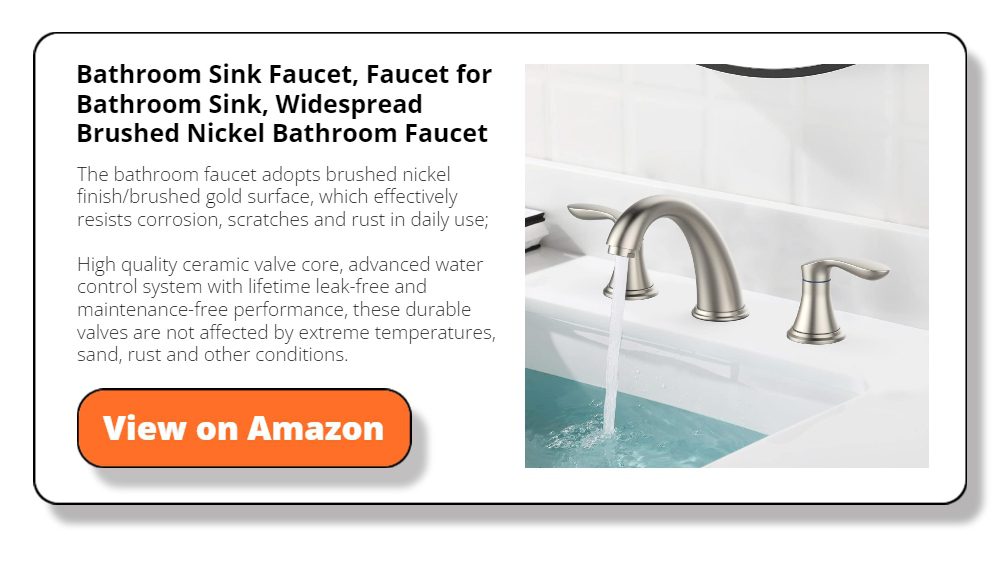
Quality and Durability
- Check the material and build quality of the sink. Thicker materials and solid construction usually indicate better durability.
- Read up on the manufacturer’s reputation and the longevity of their products.
- Consider the warranty offered by the manufacturer. A longer warranty period can signify the manufacturer’s confidence in their product.
Size and Fit
- Ensure the sink fits your bathroom space and works with your existing plumbing. Take accurate measurements before making a purchase.
- Consider the depth of the sink and usage. Shallow sinks can lead to more splashing, while deeper sinks might be more practical for daily use.
Style and Compatibility
- Choose a sink that complements the overall style of your bathroom. The sink should blend well with the decor and other fixtures.
- If you’re not changing your entire bathroom, consider how the new sink will match the existing tiles, countertops, and fixtures.
Eco-Friendly Options
- Look for sinks with water-saving features, which can help reduce water usage and lower your bills.
- Consider materials that are sustainable or have a lower environmental impact.
Installation Considerations
- Understand the installation requirements of the sink you choose. Some sinks may need specific types of mounts or additional structural support.
- Factor in the cost of professional installation if you’re not planning a DIY installation.
Final Checks Before Purchase
- Review return policies and guarantees before making a final decision.
- Ask about after-sales services and support in case of issues or queries post-purchase.
Smart shopping for a bathroom sink means doing thorough research, understanding your needs, and choosing to balance quality, style, and budget. By considering these factors, you can select a sink that not only enhances the beauty of your bathroom but also offers functionality and durability for years to come.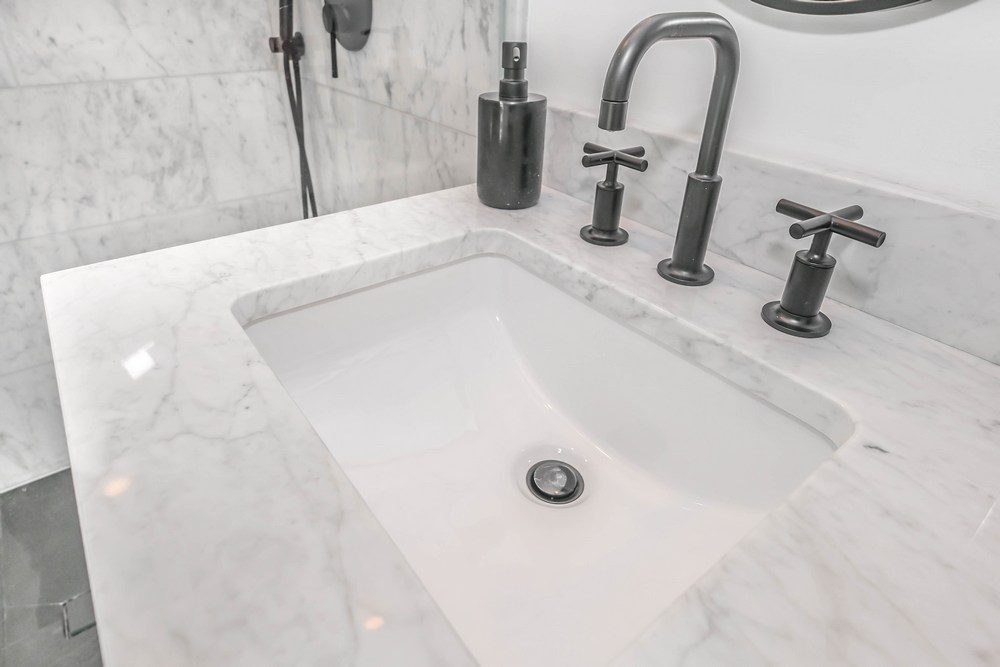
Installation of Your Bathroom Sink
Installing a new bathroom sink is crucial in your renovation or update. Whether you’re a DIY enthusiast or planning to hire a professional, understanding the installation process is important. This section will guide you through the steps and considerations for a successful bathroom sink installation.
Understanding the Basics
Before you begin, it’s essential to clearly understand your bathroom’s plumbing system. Know the location of water supply lines and drain pipes. Ensure that the new sink is compatible with your existing plumbing setup.
Choosing the Right Tools and Materials
Gather all necessary tools and materials before starting the installation. This typically includes wrenches, pliers, a drill, silicone sealant, plumber’s putty, and supply lines. The specific tools may vary depending on the type of sink and the installation method.
Preparing the Area
Clear the area where you’ll be working. If replacing an old sink, carefully remove it and clean the area. Ensure the surface where the new sink will be installed is level and sturdy.
Installing the Faucet and Drain
Before placing the sink in its final position, it’s often easier to install the faucet and drain. Follow the manufacturer’s instructions for this step. Ensure that all connections are tight and secure to prevent leaks.
Mounting the Sink
The mounting method varies based on the type of sink. For pedestal sinks, ensure that both the basin and the pedestal are level and securely attached to the wall and floor. Undermount sinks need to be attached to the underside of the countertop, while vessel sinks are placed on top of the counter. Wall-mounted sinks should be securely attached to wall studs. Always use the hardware provided by the manufacturer.
Connecting the Water Supply and Drain
Connect the sink to the water supply lines and the drain pipe. Use the plumber’s putty or silicone sealant to ensure a watertight seal. Turn on the water supply and check for any leaks. Address any leaks immediately to prevent water damage.
Look for ones like Stainless Plumbers Putty. Its 100%RTV silicon prevents bacteria growth and will provide a strong seal around the drain pipes.
Sealing and Finishing Touches
Apply silicone sealant around the edges of the sink, especially if it’s a drop-in or undermount model, to prevent water from seeping underneath. Clean any excess sealant for a neat finish.
Safety and Compliance
Ensure that your installation complies with local building codes and regulations. Hiring a professional is best if you’re not confident in your plumbing skills. A properly installed sink will not only look better but will also function more efficiently and safely.
Testing and Final Inspection
After installation, thoroughly test the sink by running water and checking the drainage. Inspect for any signs of leaks or issues with the faucet. Proper installation ensures that your sink operates efficiently and remains durable for years.
Maintenance of Your Bathroom Sink
Proper maintenance is key to ensuring your bathroom sink remains functional and aesthetically pleasing for years. Regular care prevents build-up, stains, and plumbing issues, keeping the sink in optimal condition. This section provides practical tips for maintaining different types of bathroom sinks.
Regular Cleaning
- Clean your sink regularly with mild soap and warm water. Avoid harsh chemicals that can damage the sink’s surface.
- Use a non-abrasive cleaner and a soft sponge for ceramic or porcelain sinks to avoid scratches.
- Glass sinks require gentle cleaning agents and a soft cloth to prevent scratches. Vinegar diluted with water can be effective for removing water spots.
- Metal sinks, like stainless steel, can be cleaned with a mild detergent and water. For copper sinks, avoid acidic cleaners to prevent damage to the patina.
Dealing with Stains and Scratches
- Remove stains as soon as they appear. Baking soda and water can create a gentle scrubbing paste.
- For tougher stains in porcelain sinks, use hydrogen peroxide or a bleach-based cleaner sparingly.
- Minor scratches on metal sinks can often be buffed with fine-grade steel wool.
Preventing and Clearing Clogs
- Regularly clean the drain to prevent clogs. A mixture of baking soda and vinegar followed by hot water can help maintain a clear drain.
- Install a strainer to catch hair and debris, reducing the chance of clogs.
- For persistent clogs, consider using a plunger or a plumber’s snake. Avoid chemical drain cleaners, as they can damage pipes over time.
Sealant and Caulking Maintenance
- Check the sealant and caulking around your sink annually. Reapply as needed to prevent water damage and leaks.
- For sinks with a silicone seal, such as under mounts, ensure the seal remains intact and waterproof.
Protecting Your Sink
- Avoid dropping heavy objects into the sink, which can cause cracks or chips, especially in porcelain or glass sinks.
- Use a sink protector for stainless steel sinks to prevent scratches from pots and pans.
Lime Scale Removal
- Lime scale can build up around faucets and drains in areas with hard water. Use a vinegar solution to dissolve these deposits.
- For stubborn scale, apply the vinegar with a cloth and let it sit before scrubbing.
Long-Term Care
- Inspect the plumbing connections under the sink periodically to catch leaks early.
- If you have a pedestal or wall-mounted sink, ensure it remains securely fastened over time.
Eco-Friendly Cleaning Options
- Use natural cleaning agents like vinegar, baking soda, and lemon juice, which are effective and environmentally friendly.
Professional Maintenance
- If you encounter issues beyond basic maintenance, such as deep cracks or plumbing problems, seek help from a professional.
- When searching for plumbers, ensure they are licensed to operate in your area and have insurance.
Conclusion
Choosing the right bathroom sink is crucial in designing a functional and stylish bathroom. From understanding different types of sinks to considering materials, design, installation, maintenance, and smart shopping, this guide has provided comprehensive insights to help you make an informed choice.
Remember, the ideal bathroom sink balances aesthetics with practicality, fitting seamlessly into your bathroom’s overall design while catering to your daily needs.
FAQ in Buying Your Bathroom Sink
- Can I install a bathroom sink, or should I hire a professional?
- While some types of sinks, like drop-in sinks, are DIY-friendly, others may require professional installation, especially if new plumbing needs to be set up. Assess your comfort level with DIY projects and plumbing before deciding.
- How do I choose the right size sink for a small bathroom?
- Consider compact options like pedestal, wall-mounted, or corner sinks in small bathrooms. Measure your space carefully and look for sinks designed for small areas.
- Should I know about any innovative features in modern bathroom sinks?
- Modern sinks may include built-in lighting, touchless faucets, or temperature-controlled LEDs. These features enhance functionality and add a contemporary feel.
- How often should I replace my bathroom sink?
- There’s no set timeframe for replacing a bathroom sink. It depends on its condition and your style preferences. Quality sinks can last many years with proper care.
- What’s the best way to maintain the finish on a metal sink?
- For metal sinks, use non-abrasive cleaners and avoid harsh chemicals. Regular cleaning and polishing can maintain the finish and prevent tarnish.
- Can I change the color of my bathroom sink?
- Refinishing is possible for some materials, like porcelain, but it’s a complex process that often requires professional assistance. It’s usually easier to replace the sink.
- Are overflow drains necessary in a bathroom sink?
- Overflow drains prevent water from spilling over if the sink is left running. They are a safety feature, especially in households with children or for guest bathrooms.
- How can I make my bathroom sink more accessible for users with disabilities?
- Consider a wall-mounted sink at an appropriate height, with enough clearance underneath for wheelchair access. Touchless faucets and easy-to-operate drains can also enhance accessibility.
- What should I consider to add a second sink to my bathroom?
- Ensure your bathroom has enough space for two sinks without crowding. You’ll also need to consider the additional plumbing requirements.
- Is it possible to repair a cracked bathroom sink?
- Minor cracks can sometimes be repaired, but it depends on the material and the extent of the damage. Consult with a professional to assess the feasibility.
- How can I reduce water usage with my bathroom sink?
- Install aerated faucets or faucets with low-flow technology to reduce water usage without sacrificing performance. Regular maintenance to prevent leaks is also important.
- What are the latest trends in bathroom sink designs?
- Trends include minimalist designs, natural materials like stone, integrated smart technology, and bold colors or unusual shapes for a statement piece.






